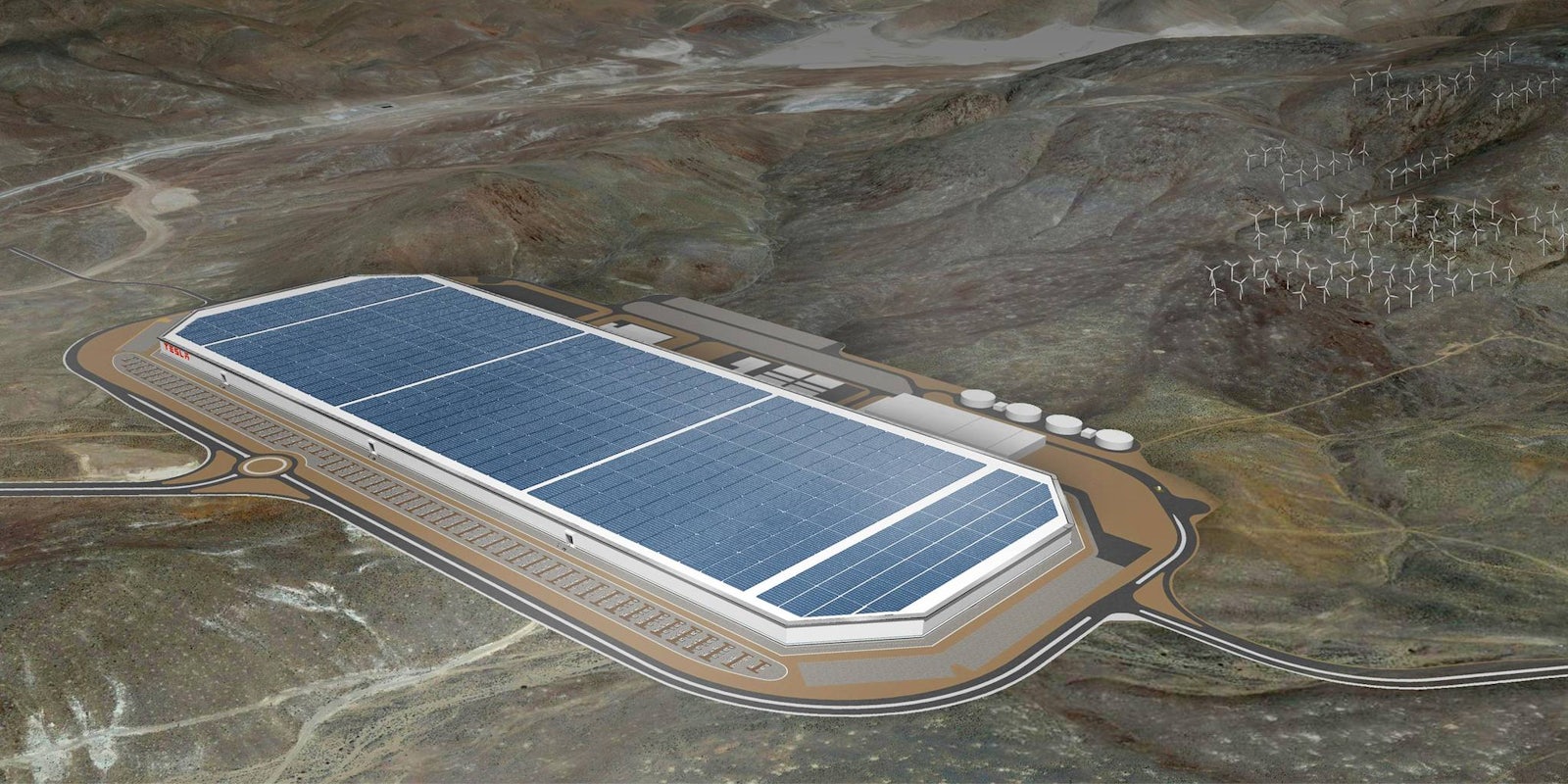The first gigafactory that’s being built by Tesla isn’t yet complete, but Elon Musk already has plans for a second.
The immense battery plant that’s still in construction near Sparks, Nevada, that will allow Tesla to produce its electric cars at a much higher volume will soon be joined by a second gigafactory to be built somewhere in Europe, Musk announced.
“This is something that we plan on exploring quite seriously with different locations for very large scale Tesla vehicles, and battery and powertrain production—essentially an integrated ‘Gigafactory 2’”, Musk said, via Car Scoops. “There’s no question that long-term Tesla will have at least one—and maybe two or three—vehicle and battery factory locations in Europe.”
When the Tesla Model 3 hits the market in 2017, Musk said he wants Tesla’s rate of car production to increase from 100,000 cars a year to 600,000.
While Gigafactory 2 will produce lithium-ion batteries and the cars themselves, Musk said both products will continue to be made in the U.S. as well. The first gigafactory—which will eventually cover 5.8 million square feet—is set to produce batteries and drive units for the Tesla Factory in Fremont, California that can produce between 500,000 and 1 million cars in a year. Construction on Gigafactory 1 began in 2014, and it’s expected to be at full capacity in 2018.
As for why the gigafactory idea is so important to the company, here’s what Tesla had to say last week about these high-production plants: “Accelerating a sustainable energy future is only possible with high-volume factories. They allow us to manufacture high-quality products with economies of scale, making them more affordable and accessible to the world. As the machine that builds the machine, our factories are so important that we believe they will ultimately deserve an order of magnitude more attention in engineering than what they produce. At very high production volumes, the factory becomes more of a product than the product itself.”
H/T Inhabitat


